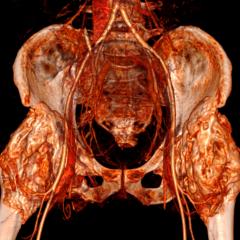A University of Queensland professor says treating people with hepatitis C before they developed progressive liver disease is key to curbing a pending epidemic of liver failure and cancer.
UQ’s Chair in General Practice, Mieke van Driel, has called on general practitioners to step up and contribute to treatment of patients with hepatitis C in the community. New direct-acting antivirals (DAAs) can be prescribed by GPs, making treatment readily accessible in the community.
Professor van Driel, along with UQ and Flinders University colleagues, has reported in the Medical Journal of Australia that while treatment by GPs is now possible, more needs to be done to help manage the disease in the population.
“Data show that only four per cent of general practitioners were treating hepatitis C cases in March 2016 when the DAAs were listed on the Pharmaceutical Benefits Scheme, but that had risen to 19 per cent in September of the same year,” Professor van Driel said.
Up to 50 per cent of people who inject drugs and 30 per cent of prisoners have hepatitis C.
Incidence in Indigenous people has increased over the past decade to four times that among non-Indigenous populations.
The authors noted however, that the majority of people living with hepatitis C were not actively injecting drugs and may not have used them for decades, but suffered from the stigma of having the virus.
“This created a barrier to diagnosis and treatment,” Professor van Driel said.
“Embedding hepatitis C management in general practice helps identify these patients, facilitates initiation of treatment and improves adherence.”
The authors suggested that continuity of GP care also created opportunities for monitoring the long-term effectiveness and safety of the new antiviral treatments.
“Tackling hepatitis C infection may lead the way to further innovations involving GP–specialist partnerships that bridge the existing divides to improve patient outcomes at an affordable price to society,” the authors concluded.



